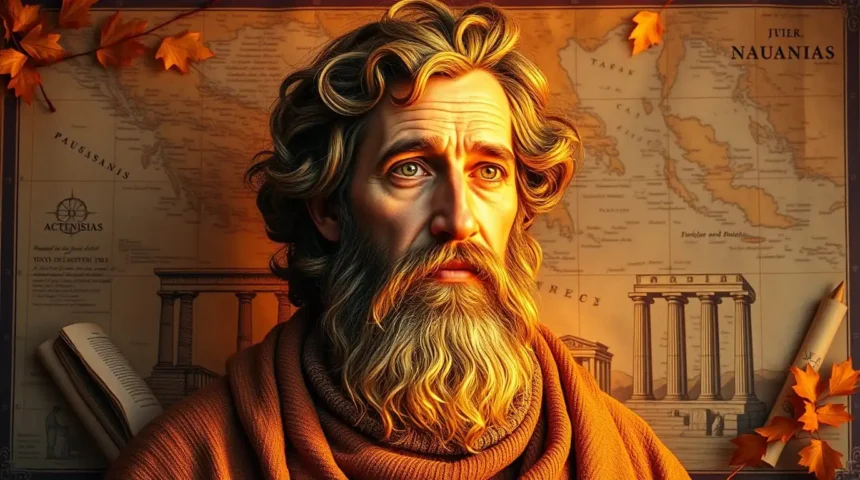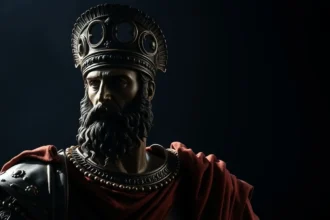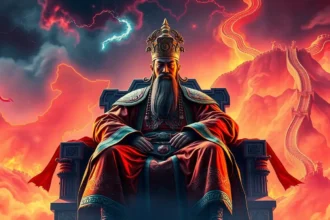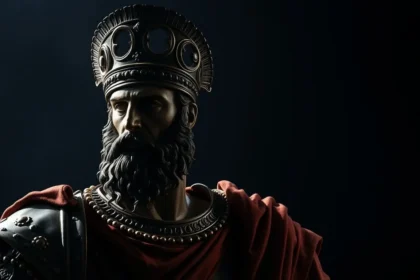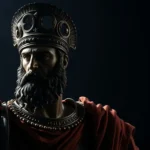Pausanias, a 2nd-century CE traveler and geographer, is renowned for his Description of Greece, a comprehensive ten-volume travelogue that provides an invaluable snapshot of ancient Greek culture, geography, mythology, and art. This monumental work bridges the classical past and Roman present, offering rich insights into a world in transition.
A people without the knowledge of their past history, origin, and culture is like a tree without roots.
Marcus Garvey, Jamaican political leader and activist.
Through meticulous descriptions of Greece’s cities, temples, monuments, and legends, Pausanias captured the essence of a civilization whose glory was fading. His work remains a cornerstone for historians and archaeologists, preserving cultural details that might otherwise have been lost. This blog delves into Pausanias’ life, his magnum opus, its historical importance, and its lasting impact.
The Enigma of Pausanias
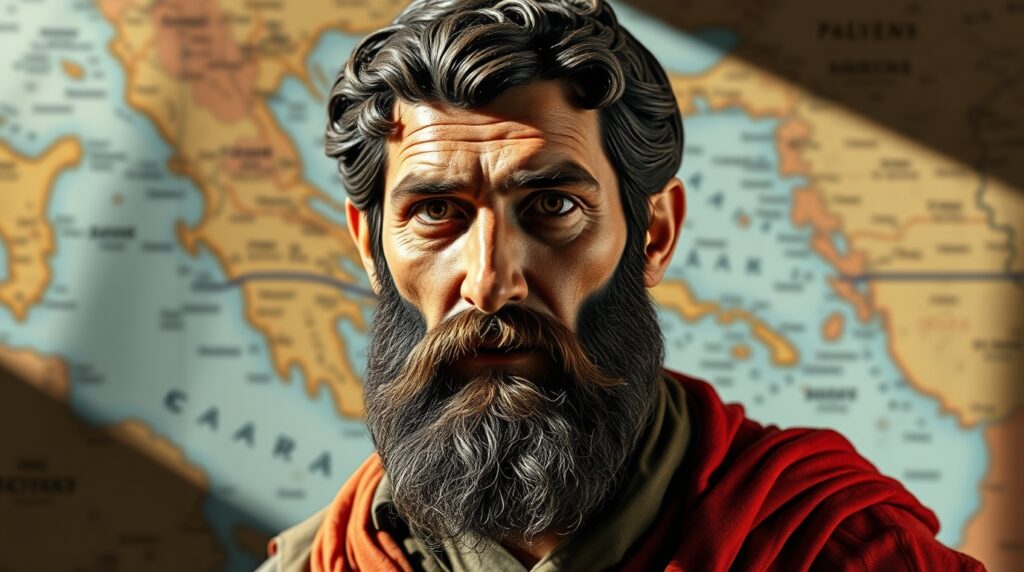
Little is known about Pausanias’ personal life, but his work reveals much about his intellectual curiosity and passion for Greek culture. Born in Lydia, in Asia Minor (modern Turkey), Pausanias likely lived during the reigns of Roman emperors Hadrian, Antoninus Pius, and Marcus Aurelius. These years were marked by the Pax Romana, a period of relative peace and stability that facilitated travel and cultural exchange.
An Educated Traveler
Pausanias’ writing reflects a well-rounded education in Greek literature, mythology, history, and geography. His journeys took him across Greece, Asia Minor, Egypt, and possibly Italy, but his primary focus was on documenting the Greek mainland. His perspective was that of a Greek deeply connected to his heritage, lamenting the decline of its ancient grandeur under Roman rule while seeking to preserve its memory.
The Description of Greece: Structure and Content
The Description of Greece is structured as a periegesis, or travel guide, and spans ten books, each focused on a specific region of mainland Greece. Pausanias’ detailed accounts combine observations of landmarks with narratives about mythology, history, and local traditions. The regions covered are:
- Attica: Describes Athens’ Acropolis, Agora, and other landmarks, as well as the city’s rich mythological and historical heritage.
- Corinthia: Focuses on Corinth, the Isthmus, and its temples.
- Laconia: Chronicles Sparta’s austere culture and monuments.
- Messenia: Examines fertile plains and the site of Messene.
- Elis (I & II): Devotes considerable attention to Olympia and its sanctuary of Zeus.
- Achaea: Highlights coastal cities and their ties to myth and history.
- Arcadia: Explores the mountainous heartland, famed for pastoral myths.
- Boeotia: Investigates Thebes and other sites central to Greek legends.
- Phocis: Focuses on Delphi, home to the oracle of Apollo.
- Ozolian Locris: A lesser-known region included for its sanctuaries and local traditions.
This structure allows Pausanias to blend topographical observations with a rich tapestry of cultural and mythological narratives.
Themes in the Description of Greece
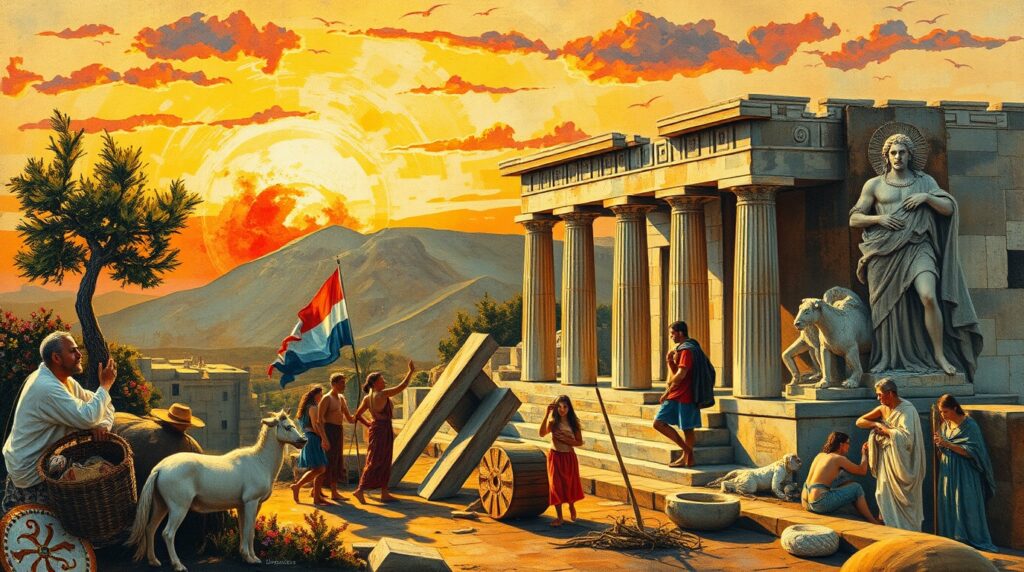
1. Cultural Preservation
Pausanias wrote at a time when many of Greece’s classical monuments were in disrepair or overshadowed by Roman influence. His work serves as a time capsule, preserving the memory of these landmarks and their associated traditions for posterity.
2. Religion and Mythology
Greek religion is a recurring theme. Pausanias meticulously documents temples, altars, and sanctuaries, often recounting the myths and rituals tied to these sacred spaces. His reverence for Greek polytheism is evident, particularly in his descriptions of sites like Delphi, Olympia, and Eleusis.
3. Art and Architecture
Pausanias’ attention to detail extends to the art and architecture of ancient Greece. He provides valuable descriptions of sculptures, paintings, and buildings, many of which no longer exist. His accounts of works by renowned artists like Phidias and Praxiteles are particularly significant.
4. History and Myth
The interplay of history and mythology is a hallmark of Pausanias’ work. He frequently connects physical landmarks to legendary events and figures, illustrating the deep integration of myth into Greek cultural identity.
The Historical Importance of Pausanias
1. A Bridge Between Eras
Pausanias lived during a transitional period when Greece’s classical heritage was being absorbed into the Roman world. His work captures the remnants of a glorious past, offering insights into how the Greeks of his time viewed their history.
History is who we are and why we are the way we are.
David McCullough, American historian and author
2. Archaeological Significance
Modern archaeologists rely heavily on Pausanias’ descriptions to identify and interpret ancient sites. For instance, his accounts guided the excavation of the Temple of Zeus at Olympia and the Sanctuary of Apollo at Delphi. His meticulous documentation has often been corroborated by archaeological findings.
3. Literary Value
Beyond its historical and archaeological significance, the Description of Greece is a literary masterpiece. Pausanias combines observation with storytelling, creating a vivid narrative that appeals to both scholars and general readers.
Pausanias’ Perspective
Pausanias’ writing reflects a deep respect for Greek traditions and a critical view of their erosion under Roman rule. While he occasionally acknowledges Roman contributions, his focus remains firmly on Greece’s pre-Roman heritage. His work is infused with nostalgia, celebrating a culture he regarded as unparalleled in its achievements.
Religious and Cultural Nostalgia
Pausanias’ reverence for Greek religion is palpable. He laments the fading of traditional practices and the neglect of sacred sites, underscoring his belief in the enduring significance of these places.
Modern Relevance
Pausanias’ work continues to resonate today as a crucial resource for understanding ancient Greece. It has inspired archaeologists, historians, and cultural preservationists alike.
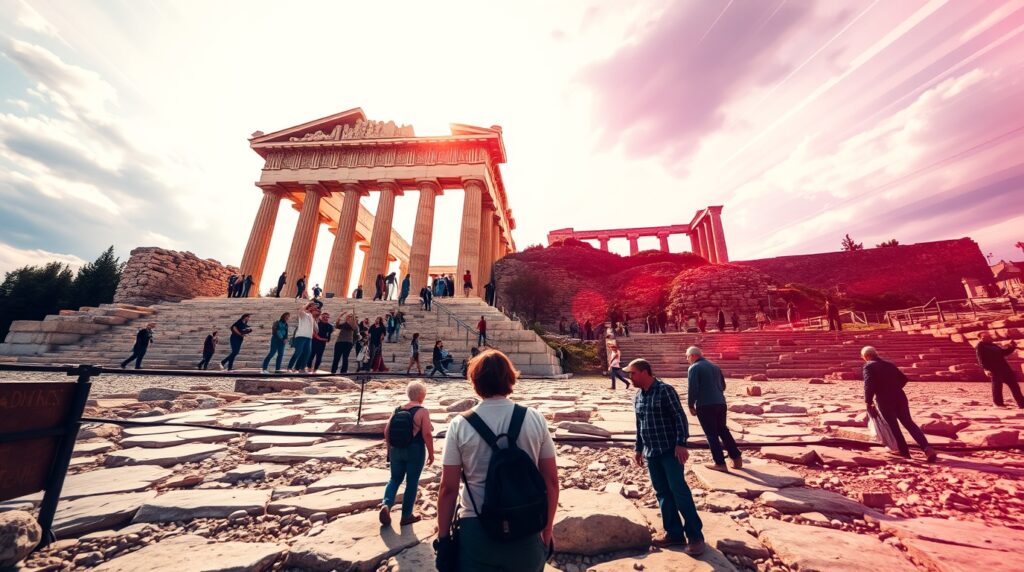
1. Archaeological Discoveries
Sites such as Delphi, Olympia, and the Acropolis owe much of their modern exploration to Pausanias’ detailed accounts. His descriptions have often provided the starting point for major excavations.
2. Cultural Heritage
Pausanias’ emphasis on documenting Greece’s cultural and religious landmarks serves as a reminder of the importance of preserving historical sites in the face of time and modernization.
3. A Timeless Guide
For readers today, the Description of Greece offers a window into the ancient world. It allows us to imagine the grandeur of Greece’s temples, the vibrancy of its cities, and the richness of its myths.
Critiques of Pausanias
While celebrated, Pausanias’ work is not without its limitations:
- Selective Focus: Pausanias often overlooks contemporary Roman contributions, focusing exclusively on Greek heritage.
- Subjective Interpretation: His accounts sometimes reflect personal biases or inconsistencies.
- Verbose Style: His writing, though rich in detail, can be dense and repetitive, reflecting the literary conventions of his time.
Despite these critiques, his work remains unparalleled in its scope and significance.
Breaking Down the Barrier
Pausanias’ Description of Greece is more than a travelogue; it is a celebration of a civilization that shaped the foundations of Western culture. Through his eyes, we journey across a land of unparalleled beauty, witnessing its temples, sanctuaries, and cities, and hearing the stories of its gods and heroes.
For modern scholars, his work is an invaluable record of ancient Greece. For readers, it is an invitation to explore a world that, while long gone, continues to inspire awe and wonder. Pausanias’ meticulous documentation ensures that the spirit of ancient Greece lives on, bridging the past and present in a timeless testament to the power of cultural memory.
Additional Resources
Here are the resources with hyperlinks for easy access to explore Pausanias, his Description of Greece, and the cultural context of his work:
Books and Biographies
- Pausanias, Travel and Memory in Roman Greece by Susan E. Alcock, John F. Cherry, and Jas Elsner
A detailed examination of the cultural and historical context of Pausanias’ travels. - Pausanias: Travel Writing in Ancient Greece by Maria Pretzler
A deep dive into Pausanias’ role as a travel writer and his influence on the study of ancient Greece. - The World of Pausanias by Christian Habicht
Provides a thorough historical context for Pausanias’ journeys and writings. - The Landmark Pausanias: A New Translation of The Description of Greece edited by Richard J. A. Talbert
A modern translation complete with maps and commentary for enhanced understanding.
Online Articles and Encyclopedias
- Stanford Encyclopedia of Philosophy: Pausanias
Offers an overview of Pausanias’ historical significance and his influence on philosophy and archaeology. - Internet Encyclopedia of Philosophy: Pausanias
Explores Pausanias’ methodology, themes, and place in classical literature. - Ancient History Encyclopedia: Pausanias
Provides a detailed article about Pausanias’ life, work, and legacy. - BBC History: Pausanias and Ancient Greece
An accessible introduction to Pausanias and his Description of Greece.
Documentaries and Videos
- Pausanias: A Journey Through Ancient Greece
A documentary exploring key locations described by Pausanias. - Traveling with Pausanias
A visual guide to the monuments and landscapes featured in the Description of Greece. - The Acropolis and Pausanias
Examines Pausanias’ accounts of Athens and their historical accuracy. - Pausanias and the Legacy of Ancient Greece
A YouTube documentary connecting Pausanias’ observations to modern archaeological discoveries.
Free Online Texts and Translations
- The Description of Greece by Pausanias (Translated by W.H.S. Jones)
Full English translation available for free on Project Gutenberg. - Greek Texts of Pausanias
Original Greek version accessible through the Perseus Digital Library. - Selections from the Description of Greece
Curated excerpts with scholarly commentary available on Internet Archive. - Myths and Monuments in Pausanias
A curated selection of excerpts focused on mythology and art.
Academic Articles and Journals
- JSTOR: Studies on Pausanias
Scholarly articles about Pausanias’ work and its impact. - Academia.edu: Pausanias and Greek Religion
A collection of academic papers discussing Pausanias’ treatment of religious sites. - Project MUSE: Pausanias and Historical Memory
Articles focusing on how Pausanias preserves history through his writing. - The Classical Quarterly: Pausanias and Greek Art
Scholarly discussions on his documentation of classical art.
Cultural and Historical Sites
- Delphi Archaeological Site and Museum
Learn more about the sanctuary Pausanias described in detail. - Olympia: Home of the Ancient Olympics
Explore the archaeological site and museum of ancient Olympia. - The Acropolis of Athens
A virtual tour of the monuments Pausanias admired. - Archaeological Site of Messene
Discover one of the best-preserved ancient Greek cities Pausanias described. - Pausanias Route in Arcadia
A modern tourism initiative retracing Pausanias’ footsteps in Arcadia.
Additional Resources for Exploration
- Mapping Pausanias
An interactive map of the sites described in the Description of Greece. - The Digital Atlas of Ancient Greece
Combines Pausanias’ descriptions with modern geographic data. - Ancient Greece Revisited: Pausanias’ Legacy
A blog series analyzing key themes in Pausanias’ work. - The Pausanias Project
A collaborative digital effort to reconstruct the sites Pausanias described.
These resources provide a rich foundation for exploring Pausanias’ life, his Description of Greece, and the enduring legacy of ancient Greek culture.
Must Read: Friedrich Nietzsche


